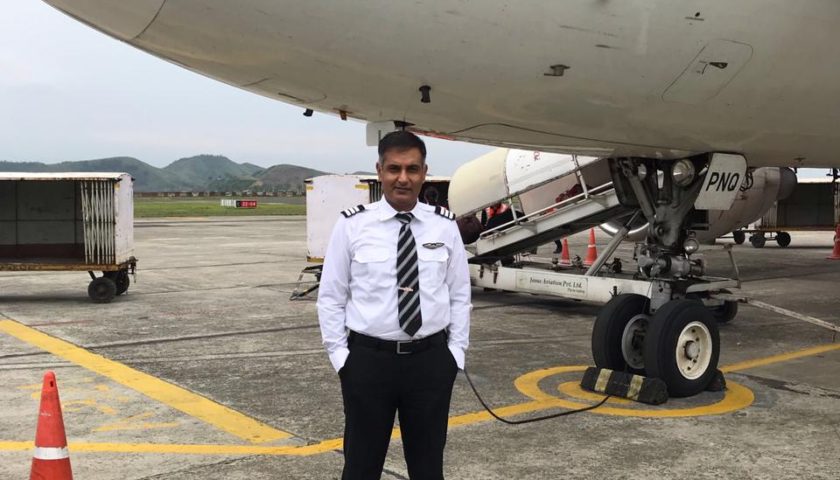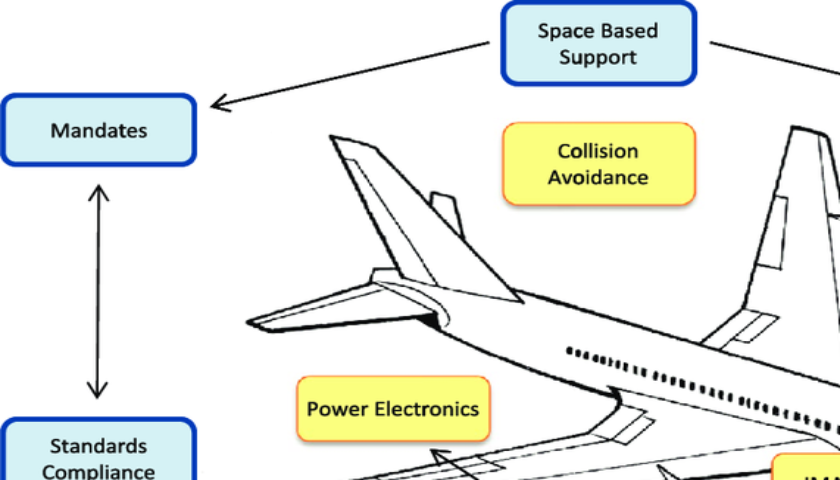The pollution debate, the winter SMOG and the spike in COVID-19 cases keep us engrossed in our daily lives. Living on Earth, the air we breathe and the birds and clouds we see, limit our world to a few hundred or maybe a few thousand feet above the surface. We rarely imagine about the events that take place above the world so high in the upper atmosphere. Not until one embarks on air travel and the aeroplane shakes a little because of “turbulence”. Mostly, this turbulence is associated with the pre-monsoon/monsoon season, thunderstorms that we can see… however at times it happens without a speck of could in the sky and we are unable to comprehend why? What is causing the aeroplane to shake without any reason? It’s a phenomenon called ‘Clear Air Turbulence’ or CAT as we call it.
CAT is defined as aircraft turbulence that occurs at altitudes of 5.6 km (atmospheric pressure of about 500 hPa) or higher, either in cloud-free conditions or within Stratiform clouds. Over India, it is a phenomenon generally associated with the Sub Tropical Jet Stream that flows over Northern India during winter months above 20000 feet with a speed of 150-200 Kmph.

The rotation of the earth, the changing temperature and pressure conditions produce circulations and when air masses meet, there is a breakdown of airflow. This causes turbulence, which could be very severe at times and can have a damaging impact on both the aeroplane and the passengers on board the aircraft. Advancements in aircraft avionics and instruments, especially weather radars, provide the pilots with accurate information about weather phenomenon such as thunderstorms, heavy rain et al, however, “Clear air turbulence is a phenomenon which still eludes our understanding and methods of detection even after decades of study” (Pao & Goldburg 1969; Knox et al 2008).
CLASSIFICATION OF TURBULENCE
While general classifications are based on the magnitude of disturbance and technical data, there is still no way to measure the degree of turbulence directly while flying in an aircraft. Hence, the classification is construed from the effects that we experience inside the aircraft as crew or passengers. Based on the level vibrations experienced, turbulence is classified in the world of aviation as mild, moderate, severe or extreme turbulence.
Mild – When the aeroplane shakes mildly and continuously and the coffee in your cup shakes a little without spilling out and you may feel a slight strain while strapped in your seat belts. It’s called a “Light Chop” a rhythmic continuous shaking of the aeroplane.
Moderate – The light chop become heavy and the effects experienced in mild turbulence are exaggerated. However, the aeroplane is in complete control. The coffee in your cup starts to splash and spills out of the cup and you can feel the squeeze against your seat belts.
Severe – The aeroplane experiences large changes in attitude, altitude and airspeed. The aeroplane could momentarily be out of control. The vibrations are heavy and those taking a snooze could be woken up. This causes things to fall from overhead storage compartments or to lift from the floor. You are violently shaken in your seat and feel the strain against the seat belts. People can get injured especially if the seat belt is not fastened properly.
Extreme – The aeroplane is tossed violently and could lead to structural damage of the aircraft. An extremely dangerous situation where people can get seriously injured and in past cases, the injuries have led to the loss of life as well.
Since turbulence cannot be detected in air, pilots have to rely on previous reports of turbulence reported by preceding aircraft and statistical analysis of previous flights that lead to the classification of turbulence zones. Although flight planners use statistical data to avoid regions of CAT, turbulence can suddenly be encountered in the air without any prior warning. In day to day flying, the incidents of mild to moderate turbulence are frequent, however, incidents of severe turbulence are rare.
GETTING OUT OF TROUBLE
Pilots while flying always listen out for any turbulence report on their route and change flight levels in advance to avoid regions of turbulence. However, once turbulence is encountered, there is a stipulated procedure that needs to be followed to get the aeroplane out of the turbulence zone and prevent any damage or injuries.
The aeroplane speed is reduced to the turbulence speed (a speed designated for each aeroplane by the manufacture) that reduces the impact of turbulence. The seat belt sign comes on to indicate to the Cabin Crew and the passengers that they need to return to the seats and fasten seatbelts. Service of hot beverages is suspended. If the intensity of turbulence is severe, the pilots take permission to vacate the zone in a hurry and are given priority over other flying aeroplanes by the ground controllers.
WHAT TO KNOW AS PASSENGERS
1. Carry small bags (definitely not more than the stipulated size) as carryon baggage. Remember it could fall on you or your loved one! (pun intended)
2. Please pay attention to the cabin crew briefing and always keep your seat belts fastened (even when the seat belts sign is off). Turbulence could be encountered without a warning!
3. If turbulence is encountered, return to your seats, fasten your seatbelts and keep all loose articles inside your bag or in the seat pocket in front of you. Those seemingly harmless items could turn into lethal weapons in case of severe turbulence!
4 Lastly, do not panic! The pilots have already initiated troubleshooting procedures and the aeroplane should be out of turbulence soon.
The atmosphere is our lifeline, and up there in the sky, mother nature reigns supreme! As long as we respect nature, we will sail through. Any disrespect, neglect or complacency could lead to trouble.
Fly safe and enjoy your flight! The pilots are working hard and on guard to ensure your safety!
For reference
On 25 April 2010, an Emirates flight from Dubai to Kochi, encountered severe turbulence resulting in injuries to several passengers (The Times of India, 26 April 2010). On 26 May 2010, the Air India flight IX-212 dropped a few thousand feet on encountering an ‘air-pocket’ (PTI News, 31 May 2010). These incidents underscore the importance of understanding such phenomena.

Gp Capt Anurag Sharma, VSM, (Retd) was commissioned into the fighter stream of the Indian Air Force on 18 Dec 1993. During almost 24 years of service, he has flown a variety of fighter and trainer aircraft with Su-30 MKI and Jaguars being his primary aircraft. He has more than 4400 of military flying to his credit. Alumni of NDA, he is a Cat A QFI, an Air Force Examiner on Jaguar and Su-30, commanded a Su-30 MKI Sqn, and was also the Chief Operations Officer of a Su-30 base. He also holds an MSc ( Def Studies) degree from DSSC and an M Phil in Defence strategy from the School of Advanced Air and Space Studies ( SAASS), USAF. Presently he is employed with an Airline as an A-320 Captain.
Thanks, Anurag for sharing your experience and thoughts. I hope readers enjoyed this article as much as we enjoyed bringing it! If you want to share your knowledge about aviation and flying, you are most welcome to do so on my blog.
Happy Landing.



